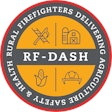
The Occupational Safety and Health Administration (OSHA) has enacted a new rule that significantly affects employers’ legal risks by allowing third parties not connected with the workplace to accompany OSHA on inspections.
The National Grain and Feed Association (NGFA) is actively working with regulatory experts, lawmakers and other stakeholders to address the consequences of this rule on the grain, feed and processing industries. Understanding the background of the rule, actions taken to mitigate potential negative impacts and recommendations for employers will help the industry take proactive steps to mitigate potential risks.
Background on OSHA’s new rule
On April 1, OSHA published its Final Worker Walkaround Representative Designation Process Rule (the “Worker Walkaround Rule”), which became effective on May 31. The Occupational Safety and Health Act of 1970 permits employers and employee representatives to accompany inspectors during physical worksite inspections — a practice known as the “walkaround rule.”
Previously, employee representatives were primarily limited to current employees, with few exceptions for third-party representatives. The updated rule now states that representatives “may be an employee of the employer or a third party,” allowing employees to invite external representatives to join OSHA inspectors during a walkaround.
This change potentially opens the door for union organizers, community activists or other third parties not officially representing the employees or the government to accompany OSHA on a workplace inspection if the Certified Safety and Health Official (CSHO) deems such parties “reasonably necessary” for a thorough inspection.
According to OSHA, “third-party” includes individuals with “relevant knowledge, skills, or experience with hazards or conditions in the workplace or similar workplaces, or language or communication skills.” The rule places the responsibility for determining the necessity of third-party representatives on the CSHO without providing specific criteria for guidance, potentially involving OSHA inspectors in labor and organizing matters that could detract from their primary mission of identifying workplace safety issues.
Industry and expert reactions
Experts from the Conn Maciel Carey LLP law firm, in a document prepared for NGFA members, argue that the rule is a covert effort to facilitate union access to non-union workplaces under the guise of safety inspections.
They warn that the rule could allow various third parties, such as disgruntled former employees, media, competitors and activist groups to exploit the new regulation.
Conn Maciel Carey outlines several practical concerns for employers:
- Union representatives at non-union workplaces might use the rule to solicit and campaign to employees during work hours on company property.
- Plaintiffs’ attorneys or their experts could use the rule to conduct pre-litigation discovery in personal injury or wrongful death actions, bypassing the Federal Rules of Civil Procedure.
- Worker advocacy groups and community organizations without safety expertise could use the rule to organize employees or identify potential litigation opportunities.
- Competitors or security threats could gain access to proprietary information, posing significant economic or physical risks.
Recommendations for employers
To prepare for and manage an OSHA inspection involving a third-party representative, Conn Maciel Carey recommends the following:
- Designate and train an OSHA inspection team to manage inspections, ensuring all members know their roles and responsibilities.
- Decide on a “warrant strategy” in advance. While requesting an inspection warrant is rarely preferred, it may be a viable option to exclude unwelcome third parties from site inspections.
- Develop comprehensive confidentiality and/or non-disclosure agreements for all guests, requiring third parties to sign before inspections begin. Designate sensitive Trade Secret Areas and seek to exclude third-party representatives from these areas.
- Establish a safety committee that includes non-supervisory employees.
- Identify employees who can serve as interpreters for a multilingual workforce during inspections.
Legal and legislative actions
NGFA joined the Employers Walkaround Representative Rulemaking Coalition led by Conn Maciel Carey, which submitted comments in November 2023 urging OSHA to withdraw the proposal.
The coalition argues the proposal expands the scope of third-party representatives, creating practical challenges for employers and violating several laws, including the Occupational Safety and Health Act of 1970 (OSH Act), the National Labor Relations Act, and the Fourth Amendment.
Republicans in the House, led by Rep. Mary Miller (R-Illinois), introduced a Congressional Review Act (CRA) resolution (H.J.Res. 147) to rescind the walkaround rule. The coalition supports this resolution, emphasizing its importance in maintaining the integrity of workplace health and safety inspections.
However, CRA resolutions require passage by both chambers of Congress and the president’s signature within a few months of the regulation’s issuance. OSHA’s timing in issuing the rule aims to avoid a potential revocation if Republicans win control of the White House and Congress in the upcoming elections.
Legal challenge
A coalition of business groups, including the U.S. Chamber of Commerce, filed a lawsuit challenging the walkaround rule in the U.S. District Court for the Western District of Texas. The complaint alleges that OSHA exceeded its statutory authority and violated the Administrative Procedure Act by failing to adequately explain the expansion of existing regulations and consider alternatives. The lawsuit also claims the rule infringes on property owners’ rights to exclude third parties, constituting an unconstitutional taking under the Fifth Amendment.
The U.S. Supreme Court’s recent ruling to overturn the Chevron doctrine could mean agencies like OSHA will have less leeway to write rules based on broad interpretations, like the walkaround rule. From now on, courts may no longer defer to an agency’s interpretation of the law just because it is ambiguous, but instead rely on judicial interpretation, which enables courts to strike down agency rules more easily.
Employers should stay informed about the new OSHA rule and take proactive measures to reduce their risk potential.
Find more OSHA resources at ngfa.org/safety and connmaciel.com/osha-inspection-masterclass.

















